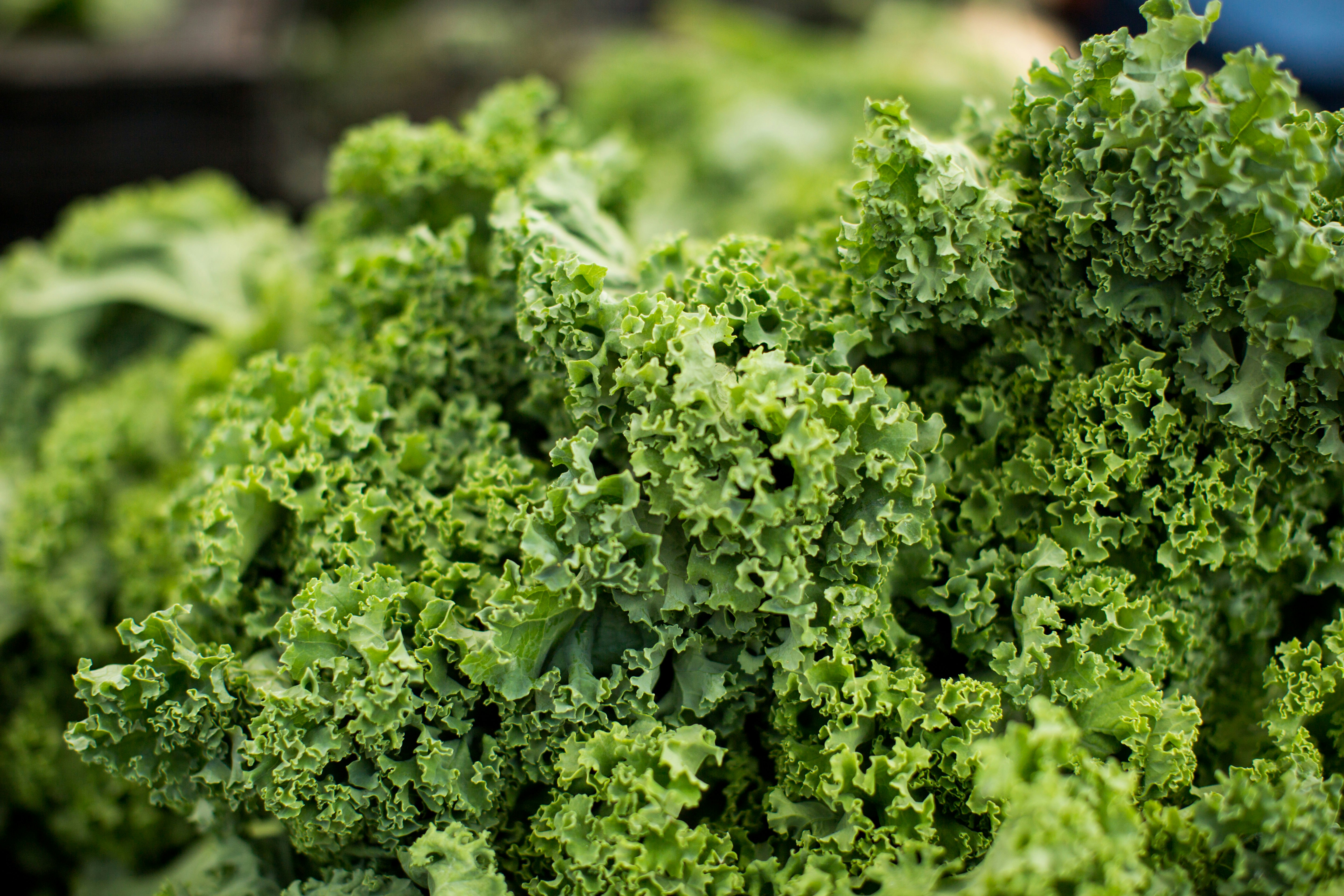
5 Creative Kale Recipes: Unleash Its Nutritional Power
What's in This Article
Kale, often hailed as a superfood, is a leafy green that packs a powerful nutritional punch. Rich in vitamins A, C, and K, as well as minerals like calcium and iron, kale is a versatile ingredient that can elevate any dish. In recent years, kale has become a staple in health-conscious kitchens, thanks to its ability to blend seamlessly into a variety of recipes.
From salads to smoothies, kale's adaptability is unmatched. This blog post will explore five creative ways to incorporate kale into your meals, highlighting its versatility and nutritional benefits. Drawing on insights from culinary experts and nutritionists, we'll delve into innovative recipes that showcase kale's potential.
Whether you're a seasoned kale enthusiast or a newcomer to this leafy green, these recipes will inspire you to find new ways to cook with kale and unleash the full power of this remarkable vegetable in your cooking. Join us as we explore the world of kale and discover how this humble vegetable can transform your meals into nutrient-rich delights.
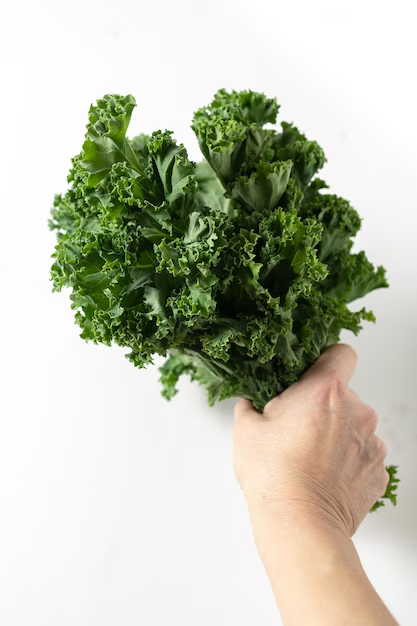
Fresh kale is packed with vitamins A, C, and K, making it one of nature's most nutritious vegetables
Kale and Quinoa Salad
Kale and quinoa are a match made in nutritional heaven. Both ingredients are packed with essential nutrients, making them a perfect pair for a healthy salad. Quinoa, a complete protein, complements kale's rich vitamin content, creating a balanced meal that provides sustained energy throughout the day.
This salad is not only nutritious but also incredibly versatile, allowing you to customize it with your favorite toppings and dressings. The combination of kale and quinoa provides a satisfying texture and flavor, making it a popular choice for those seeking a wholesome meal that doesn't compromise on taste.
The Buddha bowl concept works perfectly with this combination, allowing you to create a beautiful, Instagram-worthy dish that's as nutritious as it is attractive.
Preparing the Salad
To prepare a kale and quinoa salad, start by cooking the quinoa according to package instructions. Once cooked, let it cool while you prepare the kale. Remove the stems from the kale leaves and chop them into bite-sized pieces.
The secret to a delicious kale salad lies in the preparation technique - massage the kale with a bit of olive oil and a pinch of salt for about 2-3 minutes to soften it and enhance its flavor. This simple step transforms kale from tough to tender and makes it much more enjoyable to eat.
Combine the cooled quinoa and massaged kale in a large bowl. Add your choice of toppings, such as cherry tomatoes, cucumber, avocado, and feta cheese. For the dressing, a simple lemon vinaigrette works wonders, bringing out the natural flavors of the ingredients without overpowering them.
Nutritional Benefits
This salad is a powerhouse of nutrition. Kale is rich in antioxidants, which help combat inflammation and support overall health. Just one cup of raw kale contains more than 100% of your daily vitamin C needs and over 200% of vitamin A.
Quinoa, on the other hand, provides all nine essential amino acids, making it a complete protein source - a rarity among plant-based foods. Together, they offer a balanced meal that is high in fiber, vitamins, and minerals, supporting digestive health and providing sustained energy.
This nutrient-dense salad is perfect for those looking to maintain a healthy diet without sacrificing taste. It's also a great option for meal prep, as it can be stored in the fridge for up to three days without losing its freshness, making it an excellent choice for busy weekday lunches.
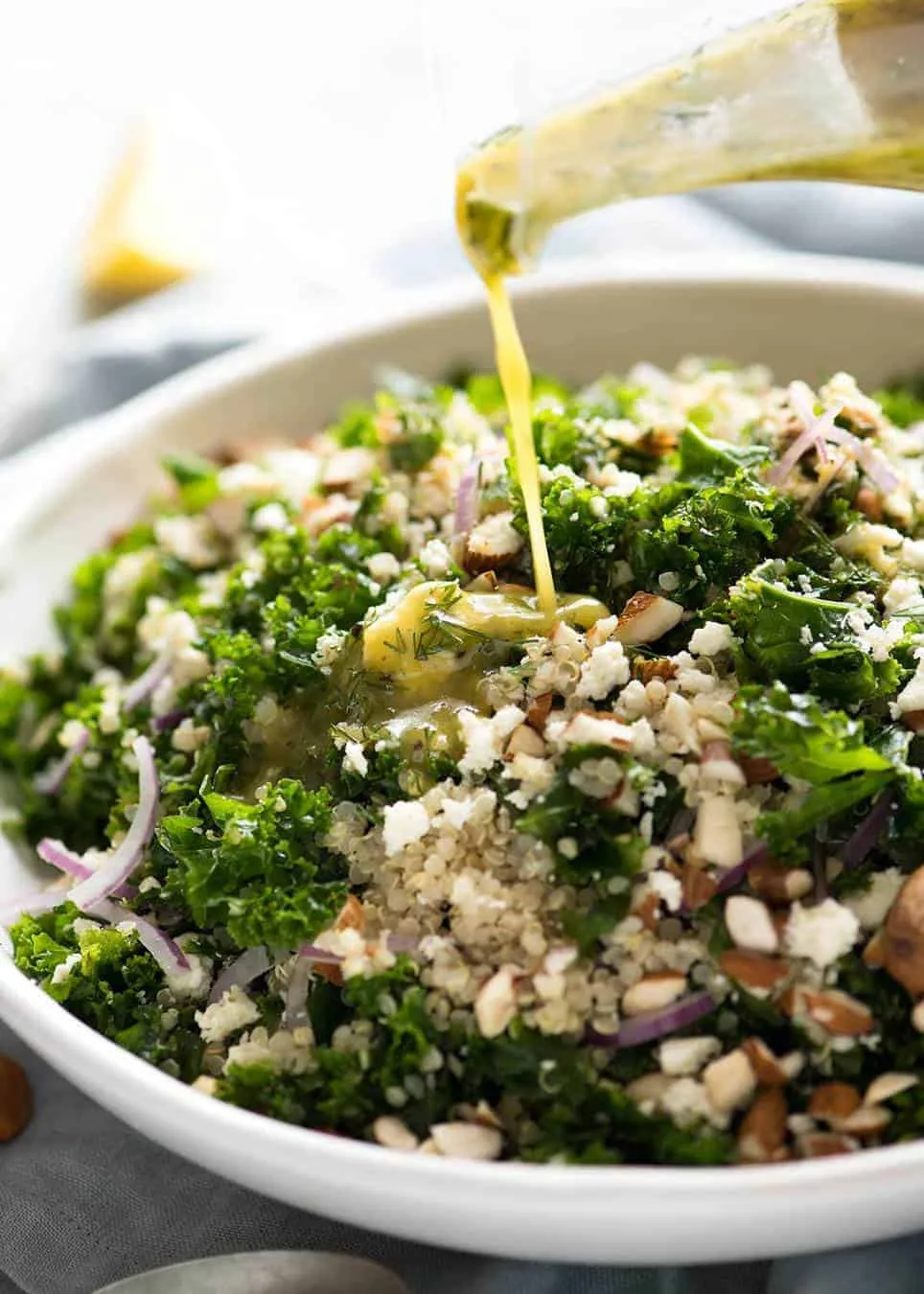
This nutrient-dense kale and quinoa salad combines complete proteins with essential vitamins
Kale Pesto Pasta
Pesto is a classic Italian sauce that traditionally uses basil as its main ingredient. However, kale can be a fantastic alternative, offering a unique twist on this beloved sauce. Kale pesto is not only delicious but also packed with nutrients, making it a healthier option for pasta lovers.
The robust flavor of kale pairs well with the nutty taste of pine nuts and the sharpness of Parmesan cheese, creating a rich and flavorful sauce that can elevate any pasta dish. The deep green color also makes for a visually stunning presentation that's sure to impress dinner guests.
Unlike traditional pesto which is strictly seasonal due to basil availability, kale pesto can be made year-round, making it a convenient option for those who enjoy this sauce regardless of the season.
Making Kale Pesto
To make kale pesto, start by blanching the kale leaves in boiling water for about 30 seconds, then transfer them immediately to an ice bath to preserve their vibrant color and halt the cooking process. This quick blanching helps tame kale's sometimes bitter flavor while maintaining its nutritional benefits.
In a food processor, combine the blanched kale, 2-3 cloves of garlic, 1/3 cup of pine nuts (walnuts work well too), 1/2 cup of freshly grated Parmesan cheese, and a squeeze of lemon juice to brighten the flavor. Blend until roughly chopped, then gradually add 1/2 cup of high-quality olive oil while the processor is running until you reach your desired consistency.
Season with salt and pepper to taste. This kale pesto can be used immediately or stored in an airtight container in the fridge for up to a week, with a thin layer of olive oil on top to preserve freshness.
Serving Suggestions
Kale pesto is incredibly versatile and can be used in a variety of dishes beyond the traditional pasta. Toss it with your favorite pasta for a quick and easy meal, or use it as a spread on sandwiches and wraps for a flavor boost. It also makes a great topping for grilled chicken or fish, adding a burst of flavor and nutrition.
For a vegetarian option, try mixing kale pesto with roasted vegetables or use it as a dip for fresh veggies. You can even spread it on pizza instead of tomato sauce for a unique and flavorful base.
The possibilities are endless, making kale pesto a must-have in your culinary repertoire. Its rich, earthy flavor complements a wide range of dishes, and its vibrant green color adds a visual appeal that's hard to beat.
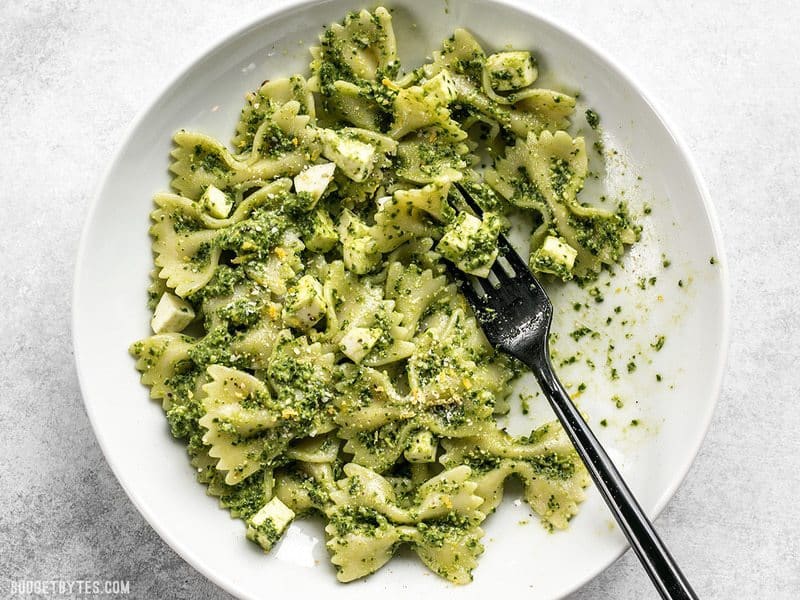
Kale pesto offers a nutritious twist on the classic Italian sauce
Kale Chips
Kale chips are a popular snack that offers a healthy alternative to traditional potato chips. They are easy to make at home and can be flavored in a variety of ways to suit your taste preferences. The transformation of kale from a leafy green to a crispy chip is almost magical, and the result is a satisfying crunch that rivals commercially produced snacks.
Kale chips are not only delicious but also packed with nutrients, making them a guilt-free snack option that you can enjoy anytime. With just a fraction of the calories and fat found in potato chips, they provide a similar sensory experience without the nutritional drawbacks.
The crispy texture and savory flavor of kale chips make them a hit with both kids and adults, providing a clever way to incorporate more greens into your family's diet.
How to Make Kale Chips
To make perfect kale chips, start by preheating your oven to 300°F (150°C) - a lower temperature than most recipes call for, but this prevents burning and ensures even crisping. Wash and thoroughly dry the kale leaves (a salad spinner works wonders here, as excess moisture prevents crispiness).
Remove the tough stems and tear the leaves into bite-sized pieces, being careful not to make them too small as they will shrink during baking. Toss the kale with about 1 tablespoon of olive oil per bunch - just enough to lightly coat each piece. Using your hands to massage the oil into the leaves ensures even distribution.
Add your choice of seasonings, such as salt, pepper, garlic powder, or nutritional yeast. Spread the kale in a single layer on a baking sheet, being careful not to overcrowd the pan. Bake for 15-20 minutes, rotating the pan halfway through. Watch them closely toward the end as they can go from perfectly crisp to burnt very quickly.
Flavor Variations
Kale chips can be customized with a variety of flavors to suit your taste and keep things interesting. For a spicy kick, try adding a pinch of cayenne pepper or chili powder before baking. For a cheesy flavor without the dairy, nutritional yeast creates a surprisingly convincing alternative that's packed with B vitamins.
You can also experiment with different herbs and spices, such as rosemary, thyme, or smoked paprika. For an Asian-inspired twist, try a combination of sesame oil, ginger powder, and a sprinkle of sesame seeds. Ranch-style chips can be made with a mixture of onion powder, garlic powder, dill, and a dash of vinegar.
The possibilities are endless, allowing you to create a snack that is both healthy and delicious. Kale chips are perfect for on-the-go snacking, as a side with sandwiches, or as a crunchy topping for soups and fresh salads.
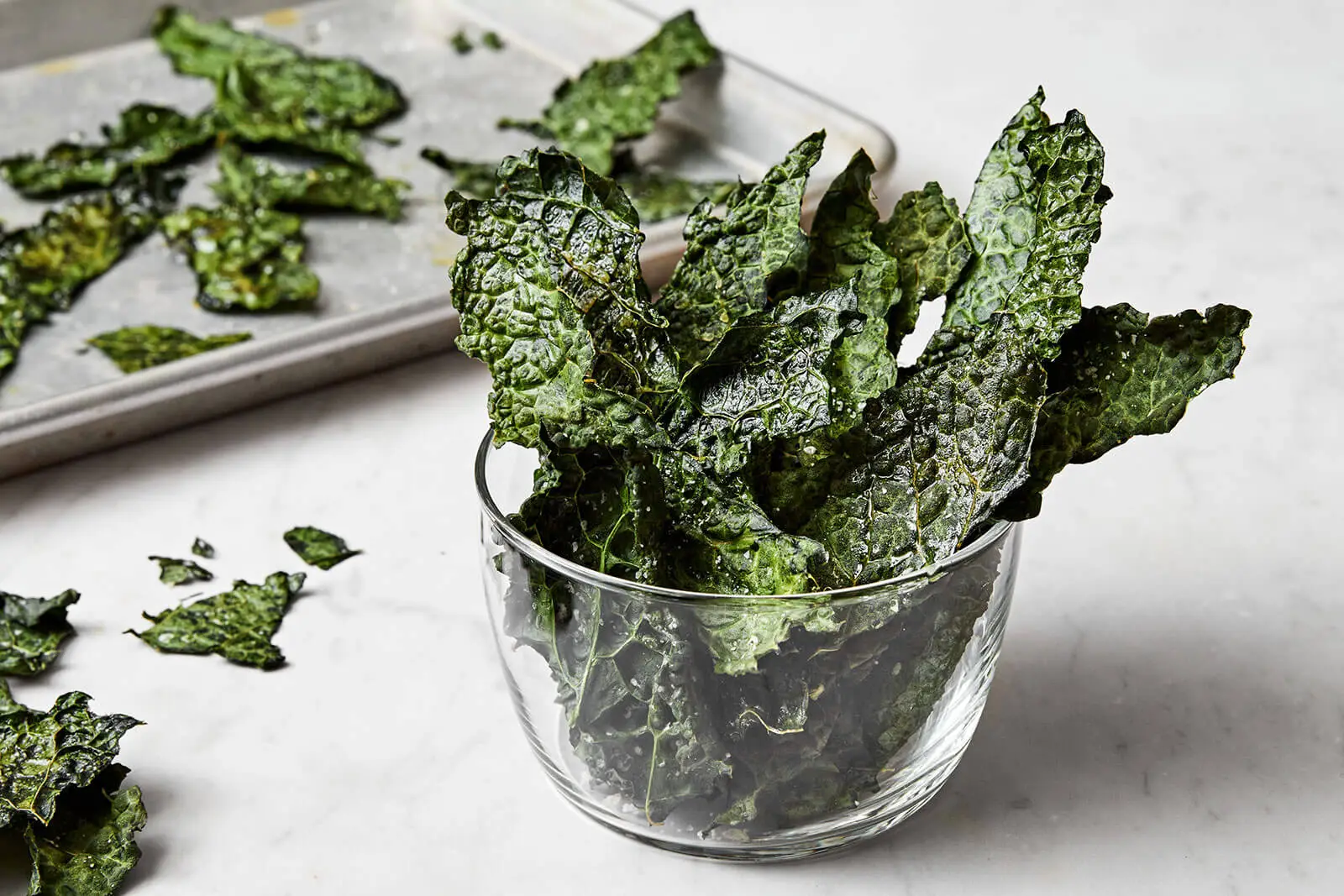
Crispy kale chips provide a satisfying, nutrient-rich alternative to traditional potato chips
Kale Smoothie
Smoothies are a convenient way to pack a lot of nutrition into a single meal, and kale is a perfect addition to any smoothie recipe. Its mild flavor blends well with fruits and other ingredients, making it an ideal choice for those looking to boost their intake of greens without compromising on taste.
Kale smoothies are not only nutritious but also refreshing, providing a quick and easy way to start your day on a healthy note. They're perfect for busy mornings when you need a portable breakfast or as a post-workout refuel option.
With the right combination of ingredients, you can create a delicious green smoothie that is both satisfying and energizing, helping you meet your daily vegetable intake goals with minimal effort.
Basic Kale Smoothie Recipe
To make a basic kale smoothie, start by adding a handful (about 1 cup) of fresh kale leaves to a high-powered blender. Remove the stems if you prefer a smoother texture, though a good blender can handle them fine. For beginners, baby kale offers a milder flavor that's less intimidating.
Add a ripe banana for natural sweetness and creamy texture, 1 cup of unsweetened almond milk (or any milk of your choice) for liquid, and a tablespoon of almond butter for healthy fats and protein. The fat content helps your body absorb the fat-soluble vitamins in kale more effectively.
For easy blending, add the liquid first, followed by the soft ingredients, and kale last. Blend until completely smooth, adding more liquid if needed to reach your desired consistency. For an extra boost of nutrition, consider adding a scoop of protein powder, a tablespoon of chia seeds, or a handful of hemp hearts.
Flavor Enhancements
Kale smoothies can be customized with a variety of ingredients to suit your taste preferences and nutritional needs. For a tropical twist, add 1/2 cup of pineapple or mango, which not only provide sweetness but also contain enzymes that help break down the fibrous kale for a smoother texture.
For a berry boost, try adding 1/2 cup of strawberries, blueberries, or mixed berries, which add antioxidants and help mask the green flavor for those new to vegetable smoothies. You can also experiment with different types of liquid bases - coconut water adds electrolytes, while oat milk provides extra creaminess.
Adding a small piece of fresh ginger or a squeeze of lemon juice can brighten the flavor while providing digestive benefits. A handful of fresh mint leaves creates a refreshing note, and a teaspoon of cinnamon adds warmth while helping to stabilize blood sugar. With so many options, kale smoothies are a versatile and delicious way to enjoy this nutritious green year-round.
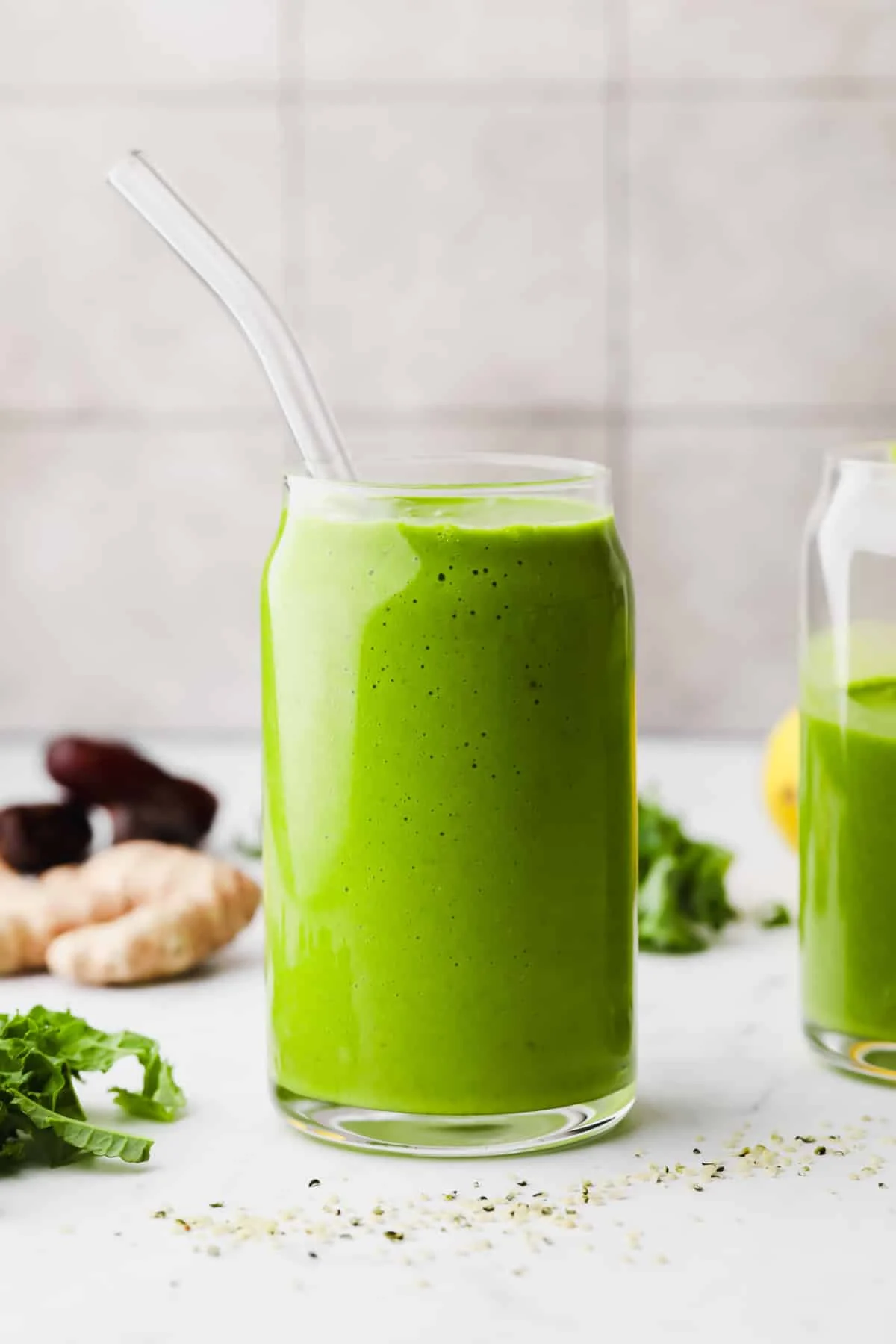
Green kale smoothies offer a refreshing way to start your day with essential nutrients
Kale Sauté with Garlic and Lemon
Sometimes the simplest preparations are the most delicious, and a classic kale sauté proves this point beautifully. Quick, easy, and incredibly flavorful, this preparation highlights kale's natural attributes while transforming it into a delicious side dish that pairs well with almost any main course.
The combination of garlic, lemon, and a touch of heat brings out kale's earthy flavor while taming any bitterness. This preparation preserves more nutrients than boiling and results in a versatile dish that can be served hot as a side or cooled and used as a base for other recipes.
Even those who claim not to like kale often find this preparation surprisingly delicious, making it a perfect gateway recipe for kale newcomers.
Basic Sauté Method
To create a perfect kale sauté, start with fresh, vibrant kale - either curly or Tuscan (lacinato) varieties work well here. Remove the tough stems and tear or chop the leaves into manageable pieces. Heat 2 tablespoons of olive oil in a large skillet over medium heat until shimmering.
Add 2-3 cloves of thinly sliced garlic and a pinch of red pepper flakes (optional) to the hot oil and cook for about 30 seconds until fragrant but not browned. Add the prepared kale to the pan along with a pinch of salt. Toss to coat with the flavored oil.
Cook the kale, stirring occasionally, for 3-5 minutes until it wilts and becomes tender but still maintains some structure. Just before removing from heat, add a squeeze of fresh lemon juice and toss again. The acid brightens the flavor and helps make the iron in kale more bioavailable for your body to absorb.
Variations and Serving Ideas
This basic sauté recipe lends itself to countless variations. Try adding pine nuts or sliced almonds for crunch, or stir in dried cranberries for a sweet-tart contrast. For a more substantial dish, add white beans or chickpeas along with a sprinkle of Parmesan cheese.
You can also incorporate different flavor profiles - use sesame oil and a dash of soy sauce for Asian-inspired kale, or add cumin, coriander, and a squeeze of lime for a Mexican twist. Caramelized onions make a wonderful addition, adding natural sweetness that complements kale's earthiness.
This versatile sauté can be served as a simple side dish, used as a bed for grilled chicken or fish, stirred into pasta or grain bowls, or even used as a filling for omelets and frittatas. Leftover sautéed kale keeps well and can be repurposed in numerous ways, making it an efficient meal prep component.
Conclusion
Kale is truly a versatile and nutritious ingredient that can be used in a variety of creative ways. From salads and pasta to chips and smoothies, kale offers endless possibilities for healthy and delicious meals that the whole family can enjoy.
By incorporating kale into your diet through these five easy recipes, you can enjoy its numerous health benefits while adding flavor and texture to your dishes. The vitamin and mineral content of kale makes it a true superfood that supports overall health, from stronger bones to improved digestion and enhanced immunity.
Whether you're looking to boost your nutrient intake, explore plant-based cooking options, or simply try something new in the kitchen, these kale recipes are sure to inspire you. Don't be afraid to experiment with different flavor combinations and cooking methods to find your favorite way to enjoy this remarkable leafy green.
So why not give these recipes a try and discover the power of kale for yourself? Start experimenting with these recipes today and unleash the full potential of this amazing superfood in your kitchen. Your taste buds—and your body—will thank you!
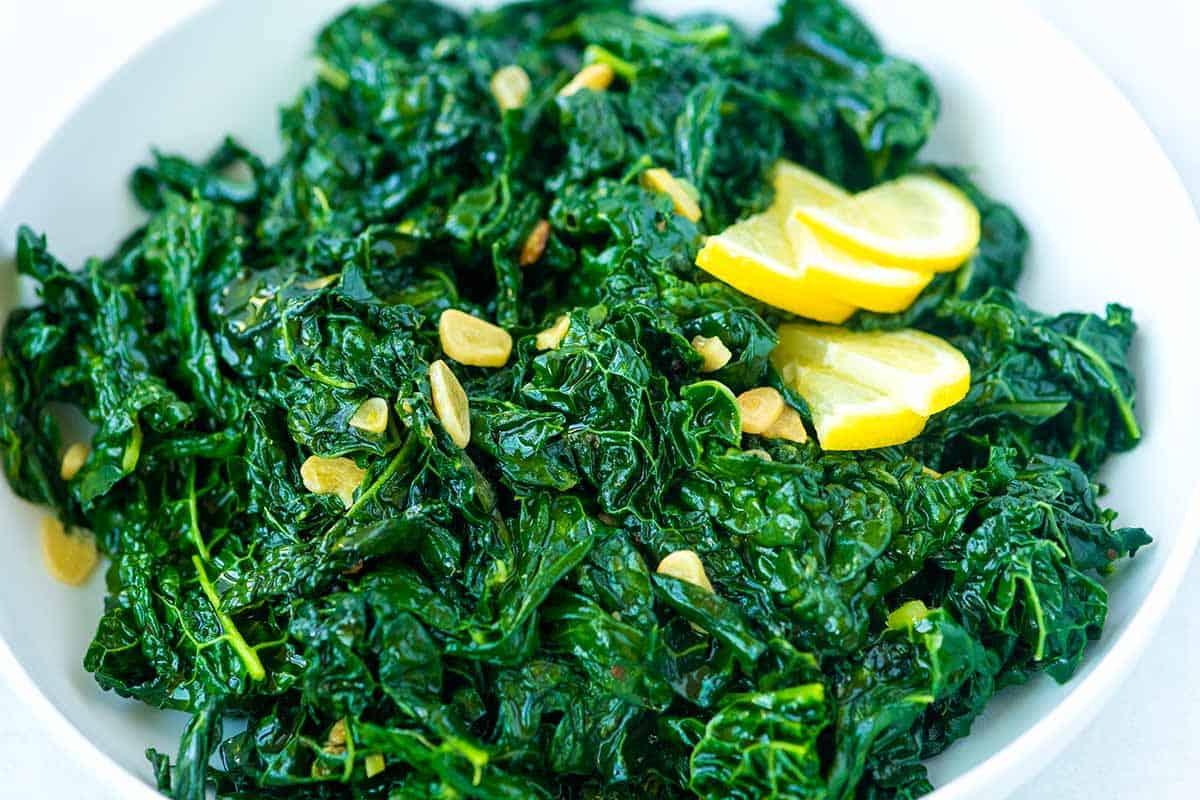
Kale's versatility makes it a perfect addition to countless healthy recipes
Frequently Asked Questions
The key to removing kale's bitterness is proper preparation. First, always remove the tough stems by folding the leaf in half and cutting along the stem or by stripping the leaves away from the stem. For raw preparations like salads, massage the kale leaves with a little olive oil and salt for 2-3 minutes until they soften and turn a deeper green. This physical process breaks down the cellular structure, reducing bitterness. For cooking, a quick blanch in boiling water (30 seconds) followed by an ice bath can also help remove bitterness while preserving the bright color and nutrients.
Kale stands out among leafy greens for its exceptional nutrient density. One cup of raw kale contains more than 100% of the daily recommended intake of vitamins A, C, and K. It's also rich in manganese, copper, calcium, potassium, and magnesium. Compared to spinach, kale has more than twice the vitamin C and significantly more vitamin K. Unlike some other greens, kale is also low in oxalates, compounds that can inhibit calcium absorption. Additionally, kale contains powerful antioxidants like quercetin and kaempferol, as well as various cancer-fighting compounds called glucosinolates that are particularly abundant in cruciferous vegetables.
To maximize kale's shelf life, store it unwashed in the refrigerator with a paper towel inside a loosely closed plastic bag to absorb excess moisture. The kale should stay fresh for 5-7 days this way. For longer storage, you can blanch kale briefly in boiling water, cool it in ice water, drain thoroughly, and freeze it in airtight containers or freezer bags for up to 8 months. Another option is to prep kale ahead of time (wash, de-stem, and chop) and store it in airtight containers with a paper towel to absorb moisture. This pre-prepped kale will last about 3-4 days and makes it easier to incorporate into meals during busy weekdays.
Different varieties of kale work better for specific recipes. Curly kale, the most common variety, has ruffled leaves and a fibrous texture that makes it perfect for kale chips and hearty salads where its volume and texture can stand up to robust dressings. Lacinato kale (also called dinosaur or Tuscan kale) has flatter, darker leaves with a more tender texture and sweeter flavor, making it ideal for raw salads, smoothies, and quick sautés. Red Russian kale has a milder, sweeter flavor with tender leaves, making it excellent for raw applications and for those new to kale. Baby kale is harvested young, resulting in smaller, more tender leaves that work well in salads and quick-cooking applications where minimal prep is desired.
Introducing kale to children can be successful with a few strategies. Start by incorporating small amounts of finely chopped kale into foods they already enjoy, like pasta sauce, pizza, or tacos where the flavor blends in. Kale chips are often a hit with children due to their crispy texture and ability to take on different flavors. Smoothies are another excellent option - the sweet fruits mask kale's flavor while maintaining its nutritional benefits. Involve children in the preparation process, as they're more likely to try foods they've helped make. Consider a 'dip strategy' - young children often enjoy dipping foods, so serving raw baby kale with a favorite dip can increase acceptance. Finally, be a good role model by enjoying kale yourself, and offer it repeatedly without pressure, as children may need multiple exposures before accepting new foods.